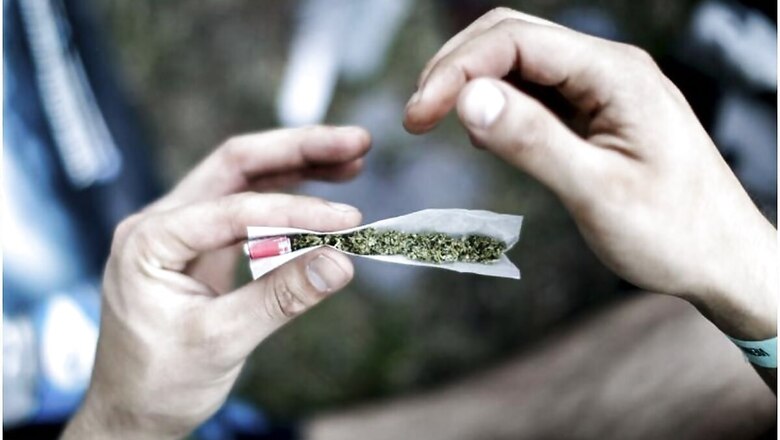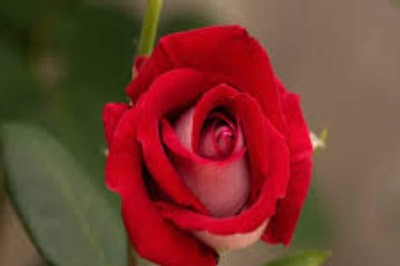
views
The roads in Patna are packed with hoardings bearing photos of students who recently cracked the prestigious IIT-JEE or AIIMS entrance examinations for admissions to top-ranked engineering and medical institutes in the country.
The city is a hub for students from across the state, who head to the state capital to secure a good career at an affordable cost. But within those narrow lanes, drug trade thrives in the daylight as a result of failed government policy.
Within a kilometre from the capital’s railway junction, peddlers can be spotted locating their customers amid the dingy shops selling spare automobile parts.
Satyam Singh* developed an alcohol addiction at a young age through his friends. A resident of the neighbouring district of Samastipur, Singh said he suffered ‘miserably’ after alcohol was banned in the state.
“Initially (after the liquor ban) I started drinking toddy, but later switched to cough syrup and medicinal drugs,” Singh said. An aspiring photographer, he added that his career took a beating due to the addiction. He has been undergoing a de-addiction therapy at a rehabilitation centre in Patna.
Many believe that the industry thrived in Bihar after the state government decided to ban alcohol, a promise which Chief Minister Nitish Kumar had made before the last assembly elections in 2015 to root out an ‘anti-social’ practice. Kumar said that the ban would curb crimes, including domestic violence against women.
It was also seen as a political pitch to woo women voters in the state. The government had initially tightened the trade through the Bihar Excise (Amendment) Bill 2016 which prescribes a death penalty for those engaged in the sale and manufacture of illicit liquor and jail terms and stiff fines for those involved in drinking liquor.
After the liquor ban was imposed, many started looking for substitutes. Drugs, being on the supply route made an easy entry into the state amid the lack of vigilance.
The addiction to cheaper medicinal drugs is a more spurious choice according to experts.
“Before 2015, there were hardly any cases related to drugs. But post 2015, I have treated more than 2,000 patients mostly addicted to ganja, smack and bhang (Hemp),” said Rakhi Sharma, who runs several facilities under Disha Rehabilitation Centre in Patna.
As many as 4,876 patients were undergoing therapy at the rehabilitation facility in 2018-19, most of them addicted to drugs.
The data by the Narcotics Control Bureau shows an alarming surge in the seizure of drugs in Bihar, which was negligible in 2015. The seizure of ganja rose from 14 kg in 2015 to 28,887 kg in 2017, a steep rise in two years. Similarly, there was no seizure of hashish in the state in 2015, but the figure rose to 243 kg in 2017.
The seizure of opium also went up from 2 kg in 2015 to 328 kg in 2017. Meanwhile, poppy which was hardly found in the state, suddenly rose to 557 kgs in 2017.
Experts say that the patients under rehabilitation are mostly addicted to smack, ganja, bhang, whitener and glue, the reason being the availability and cost.
“In the state capital, you can get ganja for as cheap as Rs 50 a packet. It can go up to Rs 300 depending on the quality. If you have more to spend, you can even get ‘Malana cream’”, said an addict from Patna, who wished to remain unnamed.
He added that it isn’t difficult to find a peddler as there are plenty of them in Naya Tola, BMP and Khagaul areas, referring to the suburbs around Patna which has undergone rapid urbanisation in the past decade.
“What is a more worrying trend is that most addicts who undergo rehabilitation are as young as 16 and below 25 years of age,” Rakhi Sharma said.
Citing data collated by the rehabilitation centre, she said that while 2,217 patients were addicted to alcohol in 2014-15, it decreased to 1,130 in 2018-19, due to the liquor ban imposed in 2015. On the other hand the addiction for ganja/charas/bhang rose from 1,459 in 2014-15 to 2,276 in 2018-19.
“The situation is pathetic. We don’t have space for any more patients. The guardians are too terrified to take them back” she added.
“It’s very difficult to keep them in control. Two television sets in the centre have been smashed. Their violence is worrisome”, Sharma said while adding that the rehabilitation centre with a capacity of 250 is fully equipped.
The problem of addiction is not limited to the state capital. The drug trade has been flourishing throughout the state’s districts. Sharma added that most of her patients come from Ara, Saharsa, Katihar, Gopalganj, Sitamarhi and Khagaria. The data of the rehabilitation centre also shows that the patients from the urban areas outnumber patients from rural areas.
But with time, the enforcement agencies became lax and drugs started flowing into the state. According to sources, drugs especially ganja find an easy entry into the state from Nepal, which is not only supplied to the state but also trafficked across the country through Bihar.
After the liquor ban, the Nitish Kumar government has come up with a substitute- ‘Neera’, a pre-fermentation version of palm tree juice for the people who were addicted to alcohol. The government had ordered a comprehensive plan under which manufacturing units for Neera were set up. However, the drink didn’t find many takers and the dream project remained unfulfilled as drug trade continued to thrive in the state.
Bihar police have registered 2,583 cases under the Narcotic Drugs and Psychotropic Substances (NDPS)
Act-1985 from 2015 to 2020 and arrested over 2,500 people, ADG Jitendra Singh Gangwar said. Efforts were made to contact the Bihar Police but no response was received from them.
In the last five years, the peddlers have made huge profits out of what they call is ‘good quality’ ganja. Atul Kumar Giri* is one of the sellers in West Champaran, which falls into the trade route of drugs from Nepal to the rest of India. Giri said that he gets as many as a thousand customers daily, selling around 50 kilograms of ganja.
But it’s not been a smooth sail for all drug peddlers. Rakhi Sharma explained that many drug peddlers themselves are in rehabilitation centres battling drug addiction.
(*Names have been changed on request.)



















Comments
0 comment